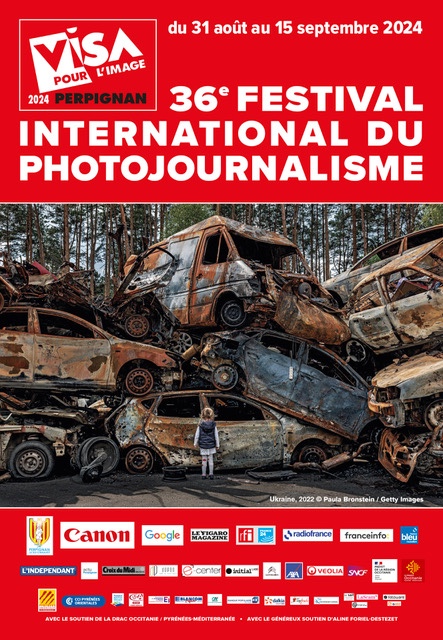
![]()
All deaths are unbearable, but this one is odious. Rémi Ochlik’s death is insufferable. Winner of the 2012 World Press Photo Award, a collection of successes was leading this clear-sighted young man towards a bright future. Ever since the « Jasmine Revolution », he took off. Place Tahrir in Egypte and especially the war in Libya where he took pictures for Paris Match and the international press the world wouldn’t forget, pictures that will remain engraved in our memories.
Paris Match sent him to Syria, but called him back: too dangerous! But he hadn’t finished his job there, and went back, with no guarantee, at his own risk and perils, into the hell of Baba Amro, the section of Homs the Syrian dictator wants to eradicate. And the « press center » was the assassins’ first target.
Last December, on the occasion of the Jean-Louis Calderon prize (in memory of this journalist killed in Romania in 1989), we published the attached article, the result of a friendly afternoon discussion between two men of different generations. I loved you Rémi! »
Michel Puech
Read more in La lettre de la photographie.
An interview of Rémi Ochlik by Michel Puech was published in La Lettre in December, 2011
As a little boy, I always wanted to become an archeologist, for the travels, the adventures…” Rémi Ochlik was born in 1983 in the industrial Lorraine region of France. He started taking pictures with a gift from his grandfather, the Olympus OM1.
Like everyone, I began taking pictures of my friends. I did the developing and the printing. My parents wanted to send me to school, I chose ICART photo in Paris of which former Rapho photographer Mark Grosset was director.
In September 2002, thanks to my friends, I went to the Wostok agency. Slavica, the founder, was a surprising woman. She cooked for us, offered us vodka and edited our pictures. She would say: that one is good, that one is garbage. I learned a lot. I covered demonstrations, and more demonstrations, until in 2004 the civil war broke out in Haiti. It was my war, I thought.”
Only 20 years old
“When I saw what was going on in Haiti, I immediately asked myself what I was doing there. Guys with guns were taking me around on motorbikes. I could sense the danger, but it was where I always dreamt to be, in the action.” Choc magazine bought the pictures for 2000 euros. They were then submitted by Mark Grosset, and were selected for the Prix jeune reporter François Chalais at Visa pour l’image.
It was euphoric. I thought that every magazine would call me with commissions” he chuckled. Nothing happened, or nearly nothing. But he would travel to Liberia, Sierra Lione, then the Congo. In 2005, Slavica left Wostok, followed by Ochlik who would create IP3 with a group of friends, thereby obtaining his French press card. (n°102 206).
In 2006, IP3 included a group of young photographers doing cool things, but the economic crisis had already hit and they weren’t selling.” Rémi Ochlik, however, kept working, covering the presidential campaign of 2007, François Bayrou, Ségolène Royal, Nicolas Sarkozy…
2008, 2009… journalism was suffering. But in 2010, I decided to return to Haiti, and I arrived there just as the cholera epidemic hit. My costs were covered by a nice publication in VSD.
January, 2011, Tunisia. “Not far, not expensive”. Rémi Ochlik left with his friend Lucas Dolega who he had met two years previously at the Nouvel Observateur. On January 14, he was with Dolega when his friend was mortally injured by a grenade. Like the other young photographers there that day, he has a hard time talking about the moment when their youthful innocence disappeared.
The Lucas Dolega Generation
“Everyone was shocked… But with Luca, we had come to work. So I kept on working and began sending my pictures to Bureau 233 whose sales team was superior to IP3.
With the “Jasmine Revolution”, Rémi Ochlik’s pictures ran in Paris Match. From Tunisia, he would eventually make it to Benghazi in Libya via Egypt, and would spend one month on the dangerous front lines where three seasoned photographers would perish. When Tripoli fell, and Paris Match’s photographer Alvaro Canovas was injured in gunfire, the French newsweekly gave Ochlik a guarantee. Thanks to Guillaume Clavières and Marc Brincourt of the Paris Match photo department, he was able to “cover” the Libyan civil war, capturing the death of the dictator. Since then, he has produced commissioned work for the same magazine, documenting the destruction of the African tent city in the Parisian suburb of La Courneuve.
For Guillaume Clavières, Senior Photo Editor at Paris Match « Rémi is one of the most talented young photographers of his generation. Motivated, enthusiastic, curious and brilliant. He is capable of going from one difficult news topic to another less dramatic subject with the same photographic quality. The future is his.” As for Jean-François Leroy who in the past recognized the quality of his work, he is thrilled that the young man is again receiving an award.
Michel PuechDernière révision le 3 mars 2024 à 7;15 par Michel Puech
- Maurice Achard
« Même quand il fait beau… » - 12 juillet 2024 - « Mimi » Marchand
Bestimage for ever ? - 14 juin 2024 - Villa Tamaris
Yvette, « l’intrépide aviatrice » photographiée par Robert Doisneau - 31 mai 2024




